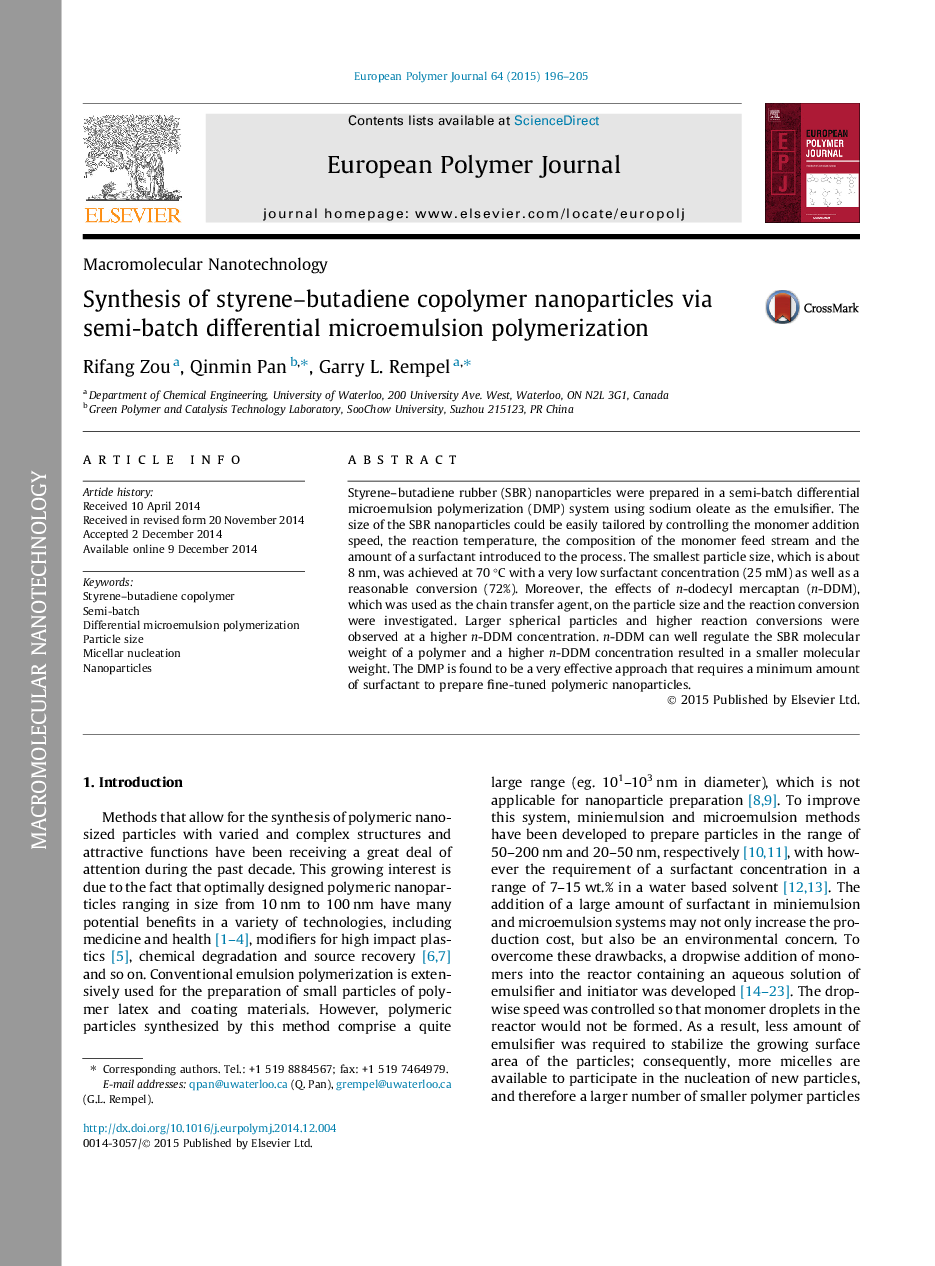| Article ID | Journal | Published Year | Pages | File Type |
|---|---|---|---|---|
| 1395266 | European Polymer Journal | 2015 | 10 Pages |
•SBR particles were produced in a differential microemulsion polymerization system.•The number of particles determines the particle size and the reaction conversion.•The chain transfer agent (n-DDM) enhances the micellar nucleation polymerization.•The smallest particle size (8 nm) was achieved at 70 °C with a 72% conversion.•This system needs a minimum amount of surfactant to prepare novel nanoparticles.
Styrene–butadiene rubber (SBR) nanoparticles were prepared in a semi-batch differential microemulsion polymerization (DMP) system using sodium oleate as the emulsifier. The size of the SBR nanoparticles could be easily tailored by controlling the monomer addition speed, the reaction temperature, the composition of the monomer feed stream and the amount of a surfactant introduced to the process. The smallest particle size, which is about 8 nm, was achieved at 70 °C with a very low surfactant concentration (25 mM) as well as a reasonable conversion (72%). Moreover, the effects of n-dodecyl mercaptan (n-DDM), which was used as the chain transfer agent, on the particle size and the reaction conversion were investigated. Larger spherical particles and higher reaction conversions were observed at a higher n-DDM concentration. n-DDM can well regulate the SBR molecular weight of a polymer and a higher n-DDM concentration resulted in a smaller molecular weight. The DMP is found to be a very effective approach that requires a minimum amount of surfactant to prepare fine-tuned polymeric nanoparticles.
Graphical abstractFigure optionsDownload full-size imageDownload as PowerPoint slide
